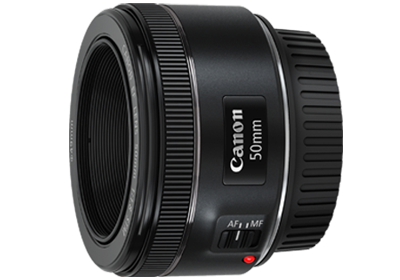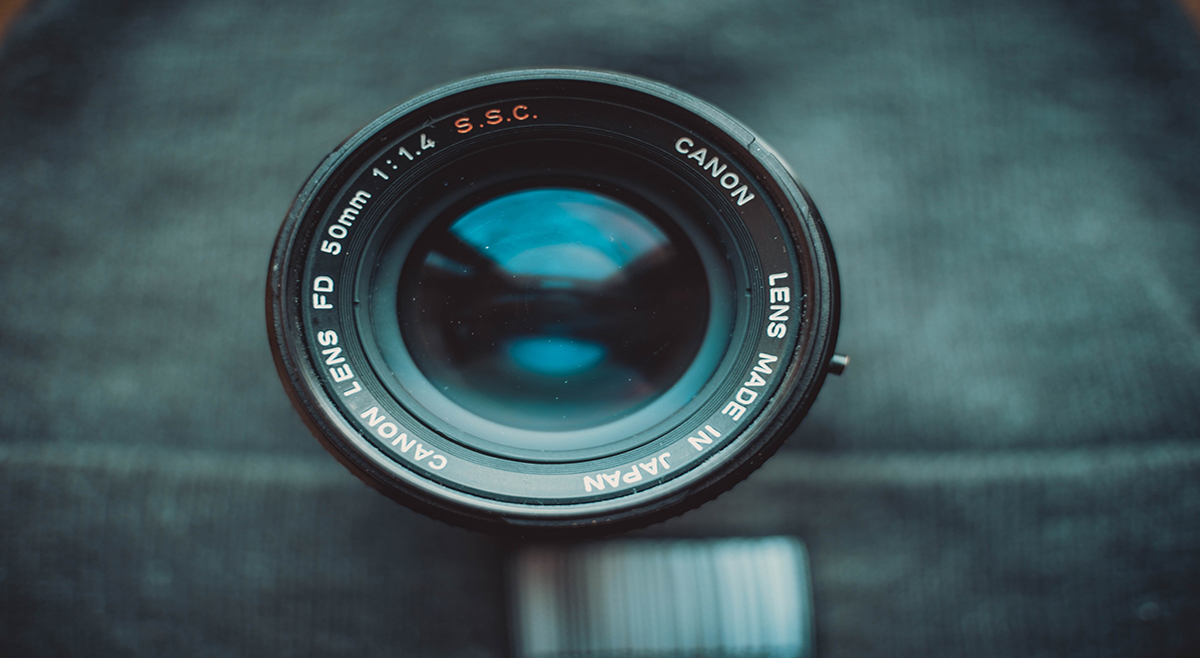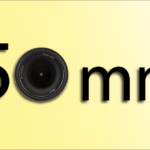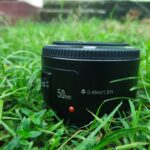The most recent “nifty-fifty” is the Canon EF 50mm f/1.8 STM prime lens for Canon EF-mount cameras. These lenses remain popular because they have a quicker aperture than many zooms. They cost more than any magnification that is decent. This is the case because they are more straightforward to construct than zoom lenses and feature simpler optical designs.
Overview of Canon 50mm 1.8


In the year 2015, the Canon EF 50mm f/1.8 STM became available. It is the third generation of Canon’s affordable 50mm f/1.8 autofocusing lenses.
Its optical make up is identical to that of its 50mm f/1.8 II predecessors. Its lens coatings, autofocusing motor, and quality of construction have all improved.
It’s larger than the recently reviewed Canon 40mm f/2.8 STM, one of the tiniest and lightest lenses for EF-mount cameras.
Both full-frame and crop sensor cameras may use the 50mm focal length. Even if you upgrade to a larger sensor, it might continue to be a long-term investment.
Considering the price tag, this lens offers excellent optical quality. Whichever kit lens you happen to be employing, it’s an enormous leap forward.
Setup and flexibility are important features.

Full-frame EF-mount cameras were the primary target market for the Canon EF 50mm f/1.8 STMOn proportional sensor EOS devices. (such as the 7D, 10D-90D series, and all Rebels), and the lens will work.
It can also be used with Canon’s full-frame mirrorless R bodies without compromising AF speed. On Canon’s cropped sensor mirrorless EF-M-mount cameras (such as the M100, M50, M5, and M6). It will still function with a slight reduction in autofocusing speed.
On many Canon cameras, such as the 600D, 7D, 7D MkII, 5D Classic, and 5D MkIII, I’ve been utilizing copies of this lens.
But keep in mind that it can’t completely replace it because their use cases differ. What’s in the box, then? Not much, as one might expect—the lens with the caps on and a user manual. You may buy a second hood (ES-68) or various hoods.
Getting one for optical and safety reasons. I’ve used a few examples of this lens in the last four to five years, and I can’t say that each use has been simple.
Most of them functioned without any problems, but I ran across two copies that had severe autofocus problems. Both variation and accuracy may be seen in them. There might be an answer to this issue.
Image size
Above your kit lens, this 50mm is renowned for its excellent image quality. But, how does it relate to other primes? quite well; but, if the clarity is what you’re anticipating, I’d stick with the 40mm f/2.8.
Wide open at f/1.8, the Canon EF 50mm f/1.8 STM has noticeable softness towards the borders of the frame, especially on large sensors. The centre of the image is sharp. At f/2.2, the corners begin to gain clarity, and the center sharpness improves further. Shot with a Canon EF 50mm f/1.8 camera lens, a street scene, f/4, 5D Mk III
I’m comfortable using this lens at f/2.8 for many picture methods, and the center is about as sharp as it gets. Corners still must have a certain amount of clarity, and they catch up above f/4.
On full-frame pictures, the distortion has a rather clear barrel pattern; on crop sensors, it is subtler. Chromatic aberrations exist, yet they are not very obtrusive.
leaving the hood on, as it exhibits a significant rise with a direct light source in or near the frame. The contrast remains well maintained, though.
High-angle picture of a cityscape shot at twilight with a Canon EF 50mm f/1.8 lens f/5.6, 7D MkII Omit, the picture quality is excellent but not unique. It performs in all typical situations.
Focusing

When autofocusing, the Canon EF 50mm f/1.8 STM works, but less so with manual focus.
Although this is not the fastest STM motor I’ve seen, the AF system is precise as well as quick. Since the aperture is so large, it works well in dim lighting.
The stepping motor is represented by “STM.” This lens makes use of a linear shifting mechanism instead of the customary ring-type ultrasonic drive. With camera bodies that have on-sensor phase detection (Dual Pixel AF), this ensures quicker focusing. In video mode, it works for autofocusing.
It also suggests the manual focus ring is linked to the glass, but. Even to focus the camera, it needs to be switched on.
The operated focus ring doesn’t react; the more you turn it, the more it shifts. If you rotate the ring while the shutter is still depressed, autofocus can be bypassed.
Like the privilege of ringing with USM engines, there is no distance scale on the lens housing. The front element does not rotate but does extend out of the barrel when focusing. It has the closest smallest focusing distance of any 50mm lens Canon has, 0.35m.
Construction and Handling Regulations
As I said before, the build quality of the current model of the Canon 50mm f/1.8 is better than the II version. The II has a colored, cheap-looking outside hull and is made completely of plastic.

The matte plastic protection of the STM variant stands on a metal base. I am not expecting any significant issues with this design, but it’s still not the most powerful when it comes to durability.
It lacks weather sealing, and its rotating front part ensures that, if you let it, moisture and water will pass through the lens. Thus, this lens is not especially suited for rain.
The size for the filter thread is 49mm, which is not an uncommon filter size. Finding filters that big is hard.
It is a bit harder to locate filters for this size than for 52mm-threaded lenses.
You can stack filters here, like with the 40mm lenses that were before reviewed. More than one filter makes it difficult for the autofocus motor to move together with the front part. The lens weighs 159g, has a diameter of 69mm, and is 39mm long.
Resolution: MTF

max aperture, classic 50mm primes are often very soft, but when stopped down to approximately f/4 or at least f/5.6, they turn sharp. The same thing holds true for the EF 50mm f/1.8 STM. Compared to its predecessor, it is actually sharp at f/1.8 in the image centre. While the contrast is lacking here, the corners and borders have a decent clarity.
In medium-aperture settings, the quality continues to improve. At f/2.8, the centre is already outstanding, and the contrast on the border of the image is enhanced. At f/4 with good borders and corners, a significant boost occurs. At f/5.6, the level of detail is excellent across the entire image. As usual, diffraction has an impact past f/8, although f/11 is still visible. As usual, diffraction gets clear past f/8, but f/11 is still usable.
In settings using large apertures, a small amount of field curvature can have an impact. The looked-at sample’s cantering quality was acceptable yet imprecise.
Beveled Bokeh

bokeh fringing is a common issue. As you observe here, the halos have two distinct colors: green beyond their focal point and magenta (red + blue) in front of it. The Canon shows some bokeh fringing at f/1.8, comparable to a lot of other lenses in this group of lenses. The issue gets less apparent as you stop down, but it’s also presents at f/2.8 and gone at f/4.
The pictures below additionally prove a little focus shift. when slowing down towards the background (residual spherical aberration).
here is a canon 50mm lens with it’s pros and cons

Pros
- light
- Excellent value for the money
- enhanced handling
Cons
- Considering this, the query “Am I going to spend money on a 50mm lens for my Canon?” is incorrect. “Is the Canon EF 50mm f/1.8 the lens for me?” ought to be the right question.
Conclusion
The Canon EF 50mm f/1.8 STM is an amazing, flexible choice. With this lens, you can control the depth of field in low light and at high apertures.
It offers great optical performance. There isn’t a lot to complain about for the price.




